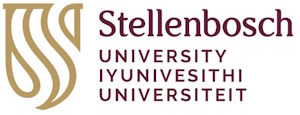
Many stumbling blocks on her five-year journey could not stop a determined Georgina Rakotonirainy to achieve her goals. This PhD graduate, who hails from Madagascar, spent the last five years far away from home in a country with a very different culture with financial constraints to boot. “It was very challenging, but I made it!” she jubilates.
Since starting her journey, she has obtained two masters’ degrees and a PhD.
After completing her undergraduate degree in pure mathematics at the University of Antananarivo in Madagascar, she enrolled for a structured master’s degree at Stellenbosch University through AIMS (African Institute for Mathematical Sciences). Thereafter, she pursued another master’s degree, this time a research master’s, at the University of Cape Town.
“While doing this master’s at UCT, I learnt more about Operations Research. This is where my path crossed with Prof Jan van Vuuren of the SU Department of Industrial Engineering. Prof Van Vuuren heads a very strong research group in this field,” she says. “I decided to do a PhD with him as my promoter.
“While I was at AIMS, I attended a workshop, Mathematics in Industry Study Group, where I was exposed to different industry problems and the use of different mathematical models to solve these problems. This really tickled my interest and I decided to switch from pure maths to applied maths for my PhD dissertation. For my research I worked on the two-dimensional strip packing problem where I compared different approaches and proposed new, efficient approaches to solve the problem.”
With a whirlwind five years behind her, she says: “I am not sure what I am going to do next. I have applied for both postdoc and academic positions at different universities as well as positions in industry. In an ideal world, I would love to have a career opportunity where I can combine academic research and work in industry.”
Prof Jan van Vuuren, her promoter, says: “I was impressed by Georgina’s work, because she identified significant contradictions in the literature, mainly associated with the use of relatively few benchmark instances when comparing the relative performances of packing algorithms and a lack of acknowledgement of the impact of the characteristics of these instances on the mean packing solution qualities achieved by the various algorithms.
She performed a cluster analysis of all available strip packing benchmark instances in the literature, for the first time, in a comprehensive study aimed at classifying benchmark data into different classes of test problems, each with varying characteristics. She demonstrated that the characteristics of these benchmark instance clusters indeed affect the mean solution quality achieved by state-of-the-art packing algorithms, thereby resolving the contradictions in the literature. Her knowledge of the various cluster characteristics enabled her to design two new algorithms which outperformed existing methods for various data clusters.
Based on her work, she was able to issue a stark warning to researchers in the area of cutting and packing problems: Take into consideration the underlying characteristics of any benchmark instances employed during a comparative algorithmic study in order to avoid biased conclusions!
Title of Thesis: Metaheuristic solution of the two-dimensional strip packing problem.
100-word summary: The two-dimensional strip packing problem consists of packing a set of rectangular items into a single object of fixed width in a non-overlapping manner, with the objective of minimising the packing height. A large set of strip packing benchmark instances from the literature was clustered into different sets of test problems. Two new metaheuristics were proposed and compared with a representative sample of metaheuristics from the literature in the context of the clustered test problems. It was found that the new algorithms outperform the existing metaheuristics and that the characteristics of the test problems affect the solution qualities achieved by the various algorithms.
Photograph:
Georgina Rakotonirainy.



